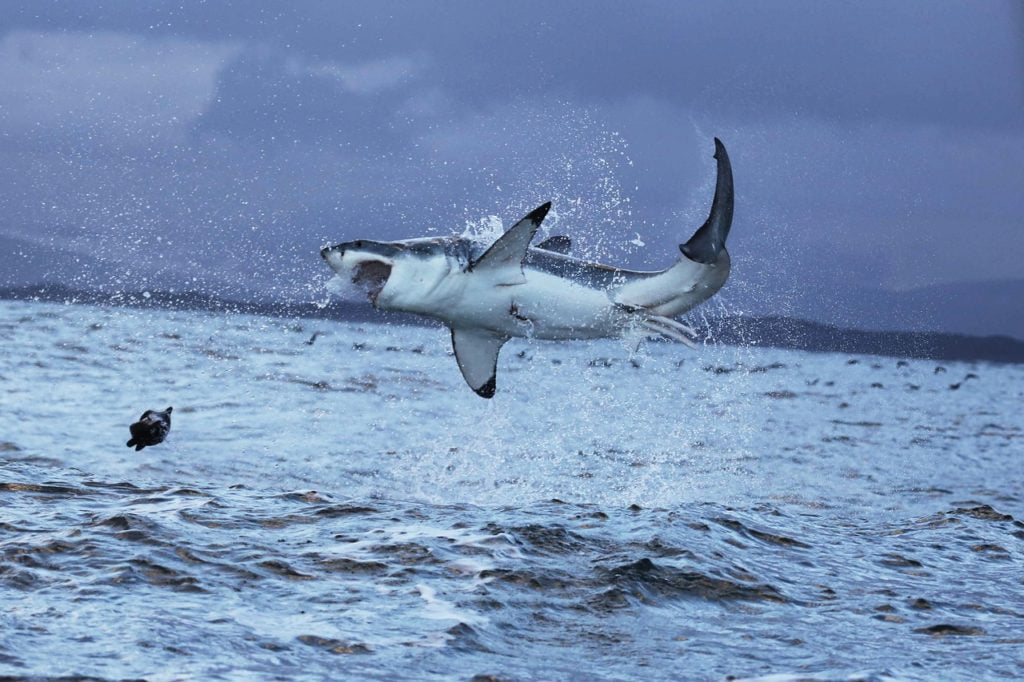Bull Shark vs Great White Shark
Sharks have been around for over 450 million years. In fact, shark were already swimming in the world’s oceans 100 million years before the first tree even existed (350 million years ago). Shark are also one of the only animals to have survived four of the five mass extinctions.
Although there are over 500 species of shark that we know about today, in this article we’re going to talk about the bull shark and the great white shark. They both belong to a group of creatures known as cartilaginous fishes; they both have a skeleton made from cartilage. Like all shark, the only part of their skeleton not made from cartilage is their teeth. But how do we set these two magnificent species apart? Let’s find out more about their shape, habitats, feeding habits and of course: Which one is more dangerous?

Bull Shark vs Great White Shark
Identification of the two species
Great White Sharks and Bull Sharks are amazing creatures. They are both ferocious hunters, extreme voyagers and a vital element of the ecosystem. It’s very unlikely to find White Sharks and Bull Sharks in the same waters. White Shark prefer off shore relatively colder waters and rarely hunt for food close to shore. Bull Shark love warmer shallow brackish waters like beachfronts and bays. They even like freshwater systems including rivers and estuaries.
Bull Shark
Bull Sharks are large, predatory carnivores with exceptional senses of smell, vision and hearing. They are common in temperate to tropical waters off the west coast of South America and around the Caribbean. Bull Sharks can thrive either salt or fresh water and can sometimes travel up rivers. The Bull Shark is the fourth most common in the world in terms of total population – with a rate of about 10 million sharks per million tons of ocean volume. It is the second-biggest predatory shark in the world after the Great White Shark, with a prevalence rate of only slightly below that of the Pacific Sleeper Shark.
Many people have mistaken the Bull Shark to be a harmless, but this is not so. This shark is one of the most aggressive shark species, they prey on other sharks, larger fish and occasionally surfers!

Spectacular White Shark Attack
One of the most recognisable features of this shark is its elongated “V” shaped mouth. It also has a very short neck, narrow shoulders and a short snout. The Bull Shark has broad, spread fins that are nearly straight. It is light grey in colour, with a dorsal fin that is larger than the dorsal spine. There are a number of possible dorsal stripe patterns, including a band around the dorsal fin, a series of black or white stripes down the middle of the shark’s body, and a couple of broad, slightly raised stripes on the sides of the body. The latter two, running along the sides of the shark’s body, are only seen on female sharks.
White Shark
It is fairly common knowledge that the White Shark is one of the most fearsome and powerful sharks in the ocean, and it is only recently that scientists have even been able to record the species.
It is possible to identify Great White Sharks by simply observing their habits. Since they are one of the largest known sharks, it should be fairly easy to notice them and their peculiarities. According to a recent study, the average lifespan of a Great White Shark is around 70 years of age, well over previous estimates, which makes it one of the oldest sharks still alive.
great white sharks eat fish (mackerel, tuna, rays) and other sharks. They even prey on larger animals such as sea lions and seals and small whales.
Great White Sharks rarely venture more than a few feet from the surface of the water where they hunt, feeding mostly on fish. Sharks have little interaction with humans, although Great White Sharks have been known to occasionally attack humans off the coast of Cape Town, South Africa.
The difference in size
The best way to differentiate between Great Whites and Bulls is their sheer size. Bull Sharks generally do not grow bigger than eight feet (2,5 m) but Great Whites can easily grow to 20 feet (6 m) or more.
Which one is more dangerous?
These two sharks are the most feared fish on the planet. Both are powerful hunters and at the top of the ocean food chain. Bulls, Great Whites and Tigers have chalked up the largest body count of all shark species and as such generally have a bit of bad press but in reality they are not very dangerous to humans and the odds of an attack are very slim. You are way more likely to be struck by lightning!
Great Whites are larger, stronger and faster but Bull Sharks live in shallow water and near beaches so they are generally a lot closer to human populations. Bulls are also more aggressive, so the chances of a strike are higher. So, overall a Bull Shark is probably a more dangerous animal to humans.

